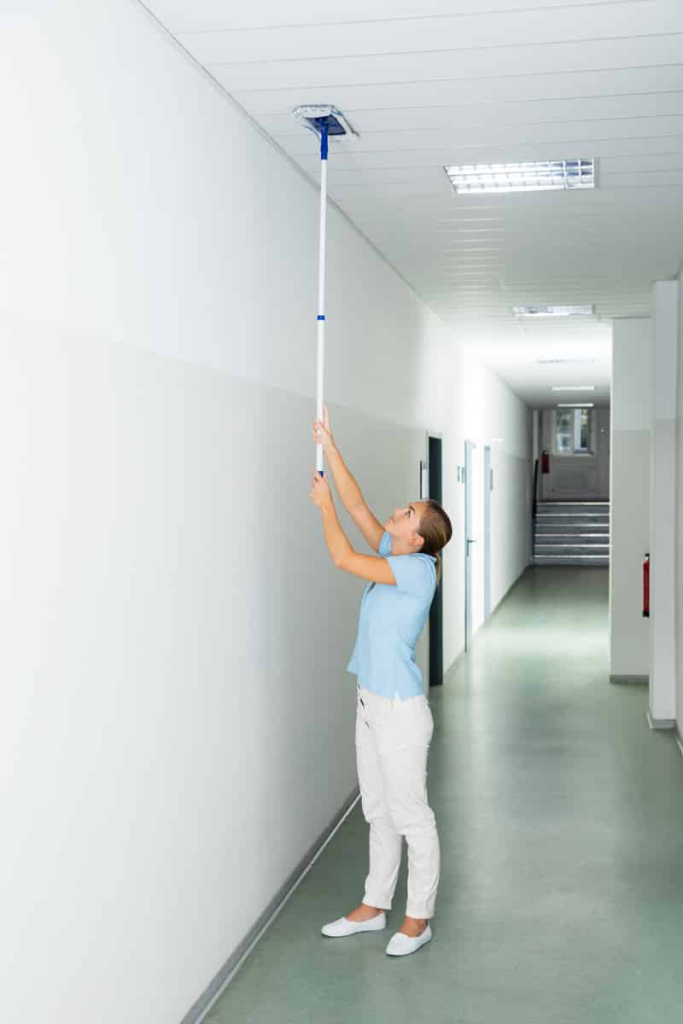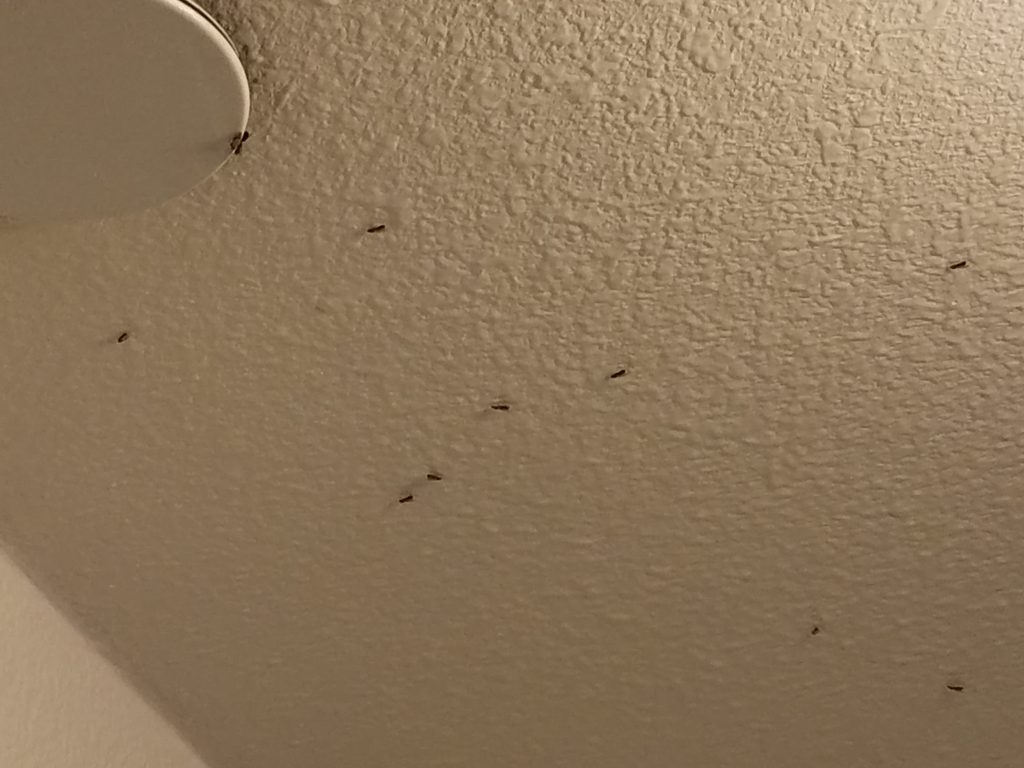Ceiling fans are a convenient addition to many homes. They help circulate air, making spaces cooler in the warmer months and providing airflow throughout the year. However, with frequent use, ceiling fans tend to accumulate dust and grime. Over time, this buildup can cause the fan blades to function less effectively, and in some cases, it can even lead to a reduction in air quality in the room. Cleaning ceiling fans can be a tricky and sometimes dangerous task, especially when the fan is high up on the ceiling. That’s where the Blade Maid Ceiling Fan Cleaning Tool comes in, offering a safe, efficient, and easy way to clean your ceiling fan blades without the hassle or mess.

In this article, we will explore the features, benefits, and uses of the Blade Maid Ceiling Fan Cleaning Tool, and why it’s an essential tool for any homeowner. Whether you’re looking to clean your ceiling fan regularly or need to tackle built-up dust for the first time, this tool provides a simple solution.
Why Cleaning Ceiling Fans Is Important
Before we dive into the Blade Maid Ceiling Fan Cleaning Tool, it’s worth understanding why ceiling fan maintenance is so important. Over time, fans can collect dust, dirt, and even mold. As the fan blades rotate, they can send dust flying into the air, affecting air quality in your home, and potentially triggering allergies. Furthermore, excessive dirt and grime on fan blades can cause the motor to work harder, leading to energy inefficiency.
Regularly cleaning your ceiling fan blades not only improves the quality of the air in your home but also extends the lifespan of the fan, preventing unnecessary wear and tear. That’s why having the right tool to clean your fan blades is essential, and the Blade Maid Ceiling Fan Cleaning Tool makes this process quick, easy, and safe.
Read too: Shiplap Ceiling in Kitchen: A Timeless Trend for a Stylish and Cozy Space
What is the Blade Maid Ceiling Fan Cleaning Tool?
The Blade Maid Ceiling Fan Cleaning Tool is a specialized tool designed for cleaning the blades of ceiling fans. It features a unique design that allows you to clean all sides of the fan blades simultaneously, reducing the mess and time it takes to clean. The tool consists of a microfiber cleaning cloth that fits over the fan blades, trapping dust and dirt while you wipe the blades clean. Its ergonomic handle provides a comfortable grip and ensures you can reach high ceiling fans without the need for ladders or scaffolding.
This innovative tool is suitable for various types of ceiling fans, including standard fans, chandeliers, and fans with larger blades. It is particularly useful for individuals who may have difficulty reaching high ceilings or those who want to avoid climbing ladders for safety reasons.
Features of the Blade Maid Ceiling Fan Cleaning Tool
Let’s take a closer look at the features of the Blade Maid Ceiling Fan Cleaning Tool and why it stands out from other cleaning tools on the market.
1. Microfiber Cloth for Dust Trapping
The cleaning tool uses a microfiber cloth that fits snugly over the blades of the ceiling fan. Microfiber is a popular material for cleaning because it traps dust, dirt, and debris effectively. The microfiber cloth helps to capture dust and prevent it from falling onto the floor or furniture while you clean. This is particularly helpful for minimizing mess during the cleaning process.
2. Convenient Design for Easy Use
The Blade Maid tool has a simple yet effective design that makes it easy to clean your ceiling fan blades. The handle is lightweight, ergonomic, and long enough to reach high ceilings, ensuring you don’t have to risk using a ladder. Additionally, it’s adjustable to accommodate different ceiling heights and fan sizes, allowing for versatile use in various settings.
3. Reusability
The microfiber cloth is washable and reusable, making it a cost-effective option for long-term use. Unlike disposable dusters or cleaning wipes, which need to be replaced regularly, the Blade Maid tool’s cloth can be easily washed and used again. This eco-friendly feature ensures that you don’t generate unnecessary waste while cleaning your ceiling fan.
4. Works with Different Fan Types
The Blade Maid Ceiling Fan Cleaning Tool is compatible with a variety of ceiling fan types, including standard fans, large industrial fans, and fans with curved blades. Whether your fan has a sleek modern design or an ornate, vintage style, this tool can handle it.
5. Safe and Easy to Use
The design of the Blade Maid tool eliminates the need for ladders, step stools, or risky balancing. It allows you to clean the fan blades while standing on the floor, making the process safer and more convenient. This is a major advantage for individuals who may be physically unable to climb ladders or for anyone who wants to avoid the risk of falling while cleaning hard-to-reach areas.
How to Use the Blade Maid Ceiling Fan Cleaning Tool
Using the Blade Maid Ceiling Fan Cleaning Tool is incredibly easy and requires minimal effort. Here’s a step-by-step guide to using the tool for cleaning your ceiling fan blades:
Step 1: Assemble the Tool
Start by assembling the Blade Maid tool if necessary. Attach the microfiber cloth to the tool’s cleaning head. The cloth should fit securely and cover the cleaning surface of the fan blades.
Step 2: Position the Tool
Stand on the floor and extend the handle to the appropriate length based on your ceiling height. Gently place the cleaning head on the surface of the fan blade. The microfiber cloth will cover both sides of the blade simultaneously, so you won’t have to wipe each side individually.
Step 3: Wipe the Blade
Using a gentle back-and-forth motion, wipe the blade clean. The microfiber cloth will capture the dust, dirt, and grime, leaving the blade spotless without any mess. If your fan blades have a lot of buildup, you can apply a small amount of water or a cleaning solution to the cloth for added cleaning power.
Step 4: Repeat for All Blades
Repeat the process for each fan blade. If your fan has multiple blades, the Blade Maid tool’s wide cleaning surface will help you clean each one in a fraction of the time it would take with a standard duster or cloth.
Step 5: Clean the Tool
Once you’re finished cleaning, remove the microfiber cloth from the tool and wash it according to the manufacturer’s instructions. This will ensure that it remains effective for future use.
Benefits of Using the Blade Maid Ceiling Fan Cleaning Tool
Using the Blade Maid Ceiling Fan Cleaning Tool offers numerous benefits, including:
- Time-saving: The tool allows you to clean multiple fan blades at once, cutting down the time needed to clean your fan.
- Mess-free: With its microfiber cloth, the Blade Maid tool traps dust and dirt, preventing it from falling onto the floor or furniture.
- Safe and comfortable: The ergonomic design makes it easy to use without the need for ladders, making cleaning safer for those with mobility concerns.
- Cost-effective: With its washable and reusable microfiber cloth, you won’t need to buy replacement dusters or wipes regularly.
- Effective cleaning: The microfiber material traps dust and debris effectively, ensuring your ceiling fan blades are spotless.
Conclusion
The Blade Maid Ceiling Fans Cleaning Tool is an excellent solution for homeowners looking to keep their ceiling fans clean and well-maintained. It’s easy to use, effective, and safe, making it a great option for cleaning fans in both high and low-ceilinged rooms. By investing in the Blade Maid tool, you can maintain your ceiling fans in top condition, improving the air quality in your home and extending the lifespan of your fans.
If you’re tired of using unreliable cleaning methods or struggling with balancing on ladders to clean your ceiling fans, the Blade Maid Ceiling Fan Cleaning Tool is a must-have. With its efficient, mess-free design, you’ll be able to clean your fans quickly and safely.

